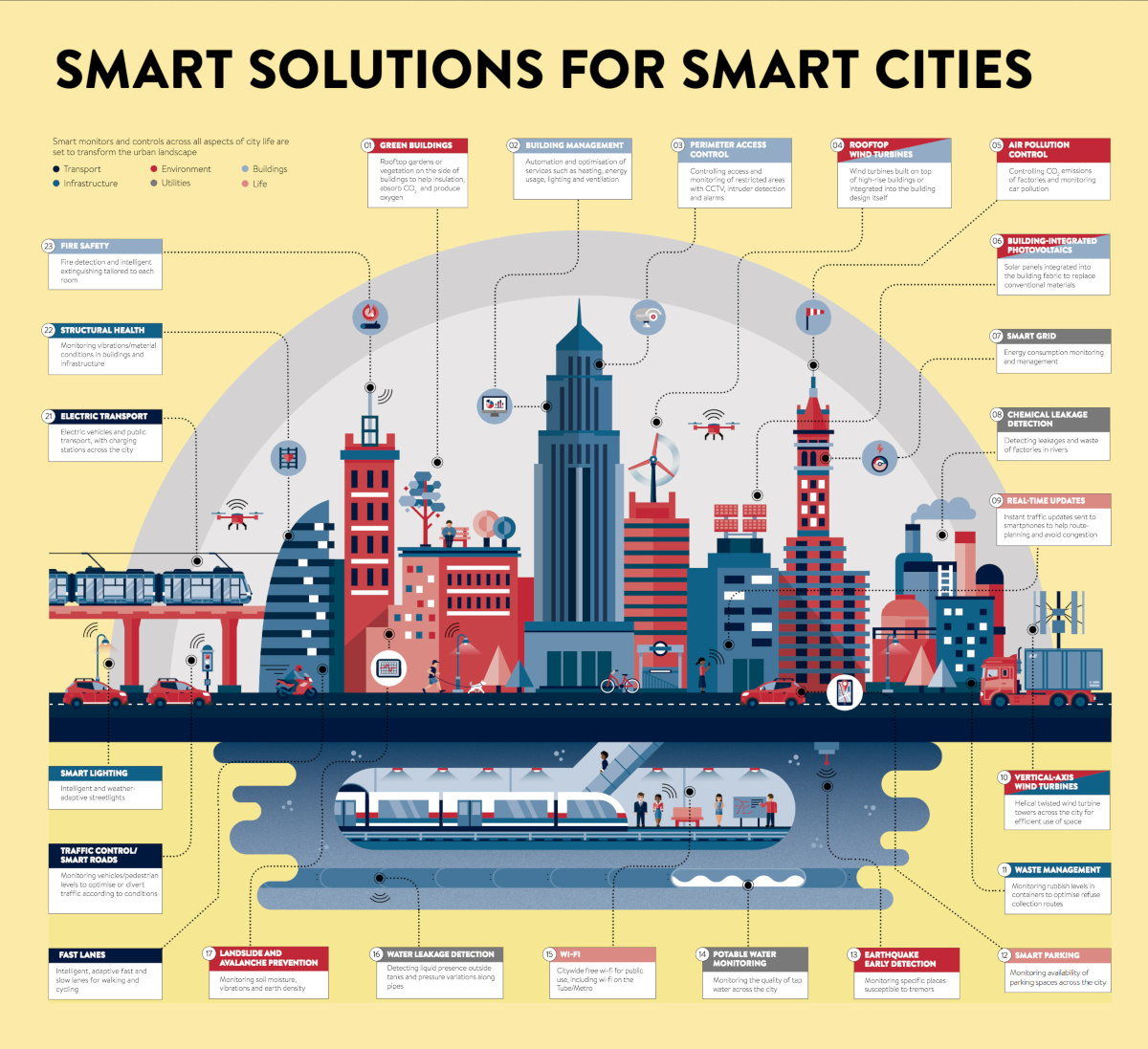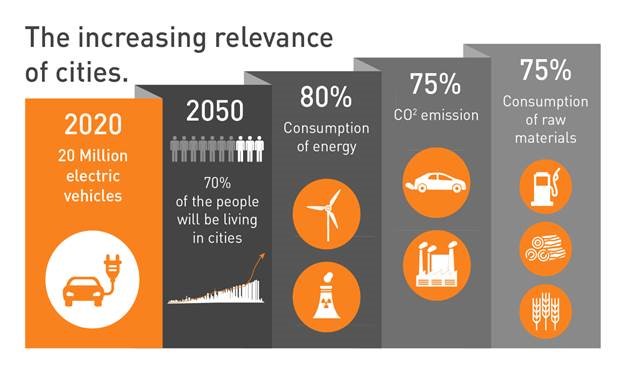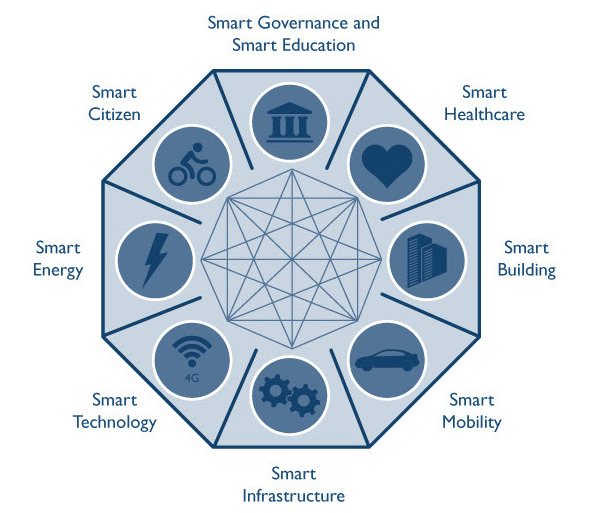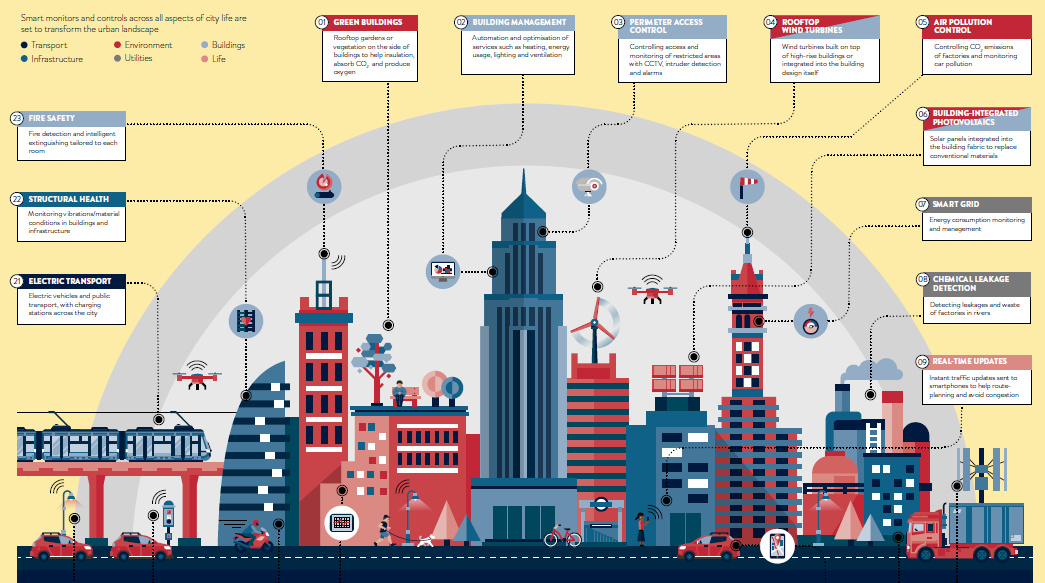Technology
How the World’s Smartest Cities are Being Built
View a high resolution version of this graphic

How the World’s Smartest Cities are Being Built
View the high resolution version of today’s graphic by clicking here.
As the world’s biggest cities continue to sprawl with many millions of new people, they’ll look to many of the technologies and tactics covered in today’s infographic from Raconteur to work smarter – and not harder – for their inhabitants.
Why Cities?
Cities are the engines of modern society.
They power the global economy, consume vast amounts of resources, house the majority of the world’s population, and create much of the pollution and emissions that have scientists concerned about the future.

And while big cities consume a lot of resources already – this hardly compares to the megacities of the near-future. In fact, in our lifetimes, we will see massive urban areas in Africa and Asia with populations that swell to 50 million people or more.
That’s right – there will be swelling urban populations that consume more food, energy, and materials than most countries.
The Right Timing
While the prospect of optimizing for the problems of burgeoning metropolises may seem daunting, the timing is actually perfect. The arrival of the Internet of Things (IoT) – thanks to innovations in cheap sensor technology, big data, and predictive analytics – is making it possible to tackle all sorts of urban issues.
Integrating this, along with other advancements in information communication technology (ICT), into urban planning is the vision for smart cities:

But, enough on the broad strokes of this movement – here’s how specific changes are taking place.
Working Smarter, Not Harder
Here are some of the initiatives taken on by the people running the smartest cities today:
Smart roads
Monitoring vehicle and pedestrian levels to optimize or divert traffic according to conditions. Intelligent, adaptive fast and slow lanes for walking and cycling.
Smart buildings
Rooftop gardens or vegetation on sides of buildings to help with insulation. Optimization of heating, energy usage, lighting, and ventilation. Integrating photovoltaics and wind turbines into building designs.
Smart lighting
Intelligent and weather adaptive street lights to boost energy efficiency.
Smart waste management
Monitoring garbage levels in containers in real-time to optimize collection routes.
Smart grids
Energy consumption monitoring and management. Uses tech to detect and react to local changes in usage.
And cities aren’t the only thing becoming smarter. See how the home is becoming smarter, as well.
Technology
All of the Grants Given by the U.S. CHIPS Act
Intel, TSMC, and more have received billions in subsidies from the U.S. CHIPS Act in 2024.

All of the Grants Given by the U.S. CHIPS Act
This was originally posted on our Voronoi app. Download the app for free on iOS or Android and discover incredible data-driven charts from a variety of trusted sources.
This visualization shows which companies are receiving grants from the U.S. CHIPS Act, as of April 25, 2024. The CHIPS Act is a federal statute signed into law by President Joe Biden that authorizes $280 billion in new funding to boost domestic research and manufacturing of semiconductors.
The grant amounts visualized in this graphic are intended to accelerate the production of semiconductor fabrication plants (fabs) across the United States.
Data and Company Highlights
The figures we used to create this graphic were collected from a variety of public news sources. The Semiconductor Industry Association (SIA) also maintains a tracker for CHIPS Act recipients, though at the time of writing it does not have the latest details for Micron.
| Company | Federal Grant Amount | Anticipated Investment From Company |
|---|---|---|
| 🇺🇸 Intel | $8,500,000,000 | $100,000,000,000 |
| 🇹🇼 TSMC | $6,600,000,000 | $65,000,000,000 |
| 🇰🇷 Samsung | $6,400,000,000 | $45,000,000,000 |
| 🇺🇸 Micron | $6,100,000,000 | $50,000,000,000 |
| 🇺🇸 GlobalFoundries | $1,500,000,000 | $12,000,000,000 |
| 🇺🇸 Microchip | $162,000,000 | N/A |
| 🇬🇧 BAE Systems | $35,000,000 | N/A |
BAE Systems was not included in the graphic due to size limitations
Intel’s Massive Plans
Intel is receiving the largest share of the pie, with $8.5 billion in grants (plus an additional $11 billion in government loans). This grant accounts for 22% of the CHIPS Act’s total subsidies for chip production.
From Intel’s side, the company is expected to invest $100 billion to construct new fabs in Arizona and Ohio, while modernizing and/or expanding existing fabs in Oregon and New Mexico. Intel could also claim another $25 billion in credits through the U.S. Treasury Department’s Investment Tax Credit.
TSMC Expands its U.S. Presence
TSMC, the world’s largest semiconductor foundry company, is receiving a hefty $6.6 billion to construct a new chip plant with three fabs in Arizona. The Taiwanese chipmaker is expected to invest $65 billion into the project.
The plant’s first fab will be up and running in the first half of 2025, leveraging 4 nm (nanometer) technology. According to TrendForce, the other fabs will produce chips on more advanced 3 nm and 2 nm processes.
The Latest Grant Goes to Micron
Micron, the only U.S.-based manufacturer of memory chips, is set to receive $6.1 billion in grants to support its plans of investing $50 billion through 2030. This investment will be used to construct new fabs in Idaho and New York.
-

 Debt1 week ago
Debt1 week agoHow Debt-to-GDP Ratios Have Changed Since 2000
-

 Countries2 weeks ago
Countries2 weeks agoPopulation Projections: The World’s 6 Largest Countries in 2075
-

 Markets2 weeks ago
Markets2 weeks agoThe Top 10 States by Real GDP Growth in 2023
-

 Demographics2 weeks ago
Demographics2 weeks agoThe Smallest Gender Wage Gaps in OECD Countries
-

 United States2 weeks ago
United States2 weeks agoWhere U.S. Inflation Hit the Hardest in March 2024
-

 Green2 weeks ago
Green2 weeks agoTop Countries By Forest Growth Since 2001
-

 United States2 weeks ago
United States2 weeks agoRanked: The Largest U.S. Corporations by Number of Employees
-

 Maps2 weeks ago
Maps2 weeks agoThe Largest Earthquakes in the New York Area (1970-2024)















